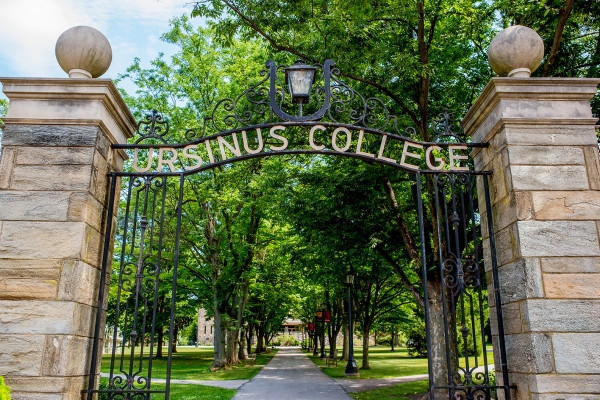You have /5 articles left.
Sign up for a free account or log in.

Ursinus College
Ursinus College would seem like the kind of college that might be struggling this year, when students' admissions decisions are heavily influenced by the COVID-19 pandemic.
The college is well respected by academics, but it is hardly famous. Ursinus is small (under 1,500 students) and has a small endowment that doesn't contribute much to the college's budget (it was valued at $144 million before the pandemic).
But the college is doing remarkably well. It has 450 deposits for next year -- two more than it had at this time last year. The class hails from 25 states, not a bad total (for a college in Philadelphia's suburbs) at a time when students are less likely to travel far from home. Twenty-two percent are first-generation college students. Twenty-one percent are students of color.
Shannon Zottola, vice president and dean of enrollment management, credits a number of factors for the success.
First, she said that the college has focused for the last two years on relationships with counselors who advise students. She said that it's key that this initiative started before the pandemic.
Second, she said, is the curriculum. Ursinus recently revamped its core to focus on four questions, to be asked throughout one’s time on campus: What should matter to me? How should we live together? How can we understand the world? And what will I do? The questions and the approach, Zottola said, are meaningful to students (in a way that many general education programs, even if students come to like them, aren't).
Her third factor? "The buy-in across the campus," particularly from faculty members. Ursinus always stresses the faculty in the admissions process. The college, like most liberal arts colleges, emphasizes that students study in small classes with professors who get to know them, starting as freshmen. In the past, faculty members have hosted prospective students interested in their fields in class. And there have been special forums for people interested in certain majors. This year, the invitations were extended to include online sessions.
But the key role for faculty members this year was actually calling students. Zottola divided the potential students up by potential majors and got at least one faculty member in each major to call the students. No extra pay was provided.
Susanna A. Throop, chair of the history department, said she and two colleagues called 58 students.
"We did get some voice mails that weren't returned, but we got some of them and talked about history, the jobs students can get and what they liked about history," she said.
"We want students to be engaged in our classes," so the calls were rewarding, Throop said. "It's exciting to hear a student talk about why they want to study history."
That makes up for the time, she said. "Of course, no one who doesn't do this for a living feels like, 'Great, now I have a spreadsheet of people to call.'" She said it was especially rewarding when students she called emailed to say they were coming.
Scott Deacle, associate professor of business and economics, said he handled about 50 to 60 calls. Like Throop, he said, some didn't ever go through, but others did.
He has been at Ursinus for nine years, and this was the most involved he's been in admissions. "We have a collaborative culture," he said. "When a department needs help, people pitch in."
Deacle found most of the students were interested in careers. "What kind of jobs do you get?" was frequently asked. "If they are coming to Ursinus, they are paying more than somewhere else," he said.
The Money
And then there is money. Ursinus didn't lower its deposit ($500), as other colleges have done.
Of course, the deposit is only a small part of the financial picture at Ursinus. For 2020-21, tuition at Ursinus is $55,210. With room and board, students would have to pay $68,740.
But relatively few will pay these amounts. At Ursinus, the discount rate -- the share off sticker price that the college provides aid for -- is 66 percent for the coming year. That figure is high, even compared to the high discount rates most colleges have (close to 50 percent). But it is only one percentage point higher than it was the year before.
Zottola said that she realizes a discount rate in the mid-60s would scare off many a college president. But Zottola said she has seen many aid awards from other colleges that are much higher than she thinks is justified. "But if you looked at our sticker price, we're a fairly expensive institution." While not naming names, she said "the competitor packages were like something I've never seen."
She is particularly proud that of those 250 students who appealed their financial aid package, Ursinus had a yield of 60 percent. She said that about half of the appeals were related to COVID-19.
"There were appeals that we rejected," she said. The college didn't have money to spend on students who didn't need it. But she saw a lot of real need.
In handling appeals, she said, "we're having an honest conversation."








